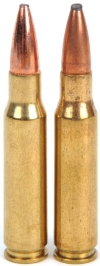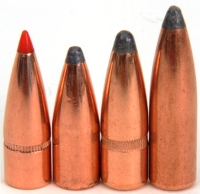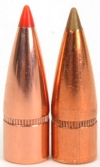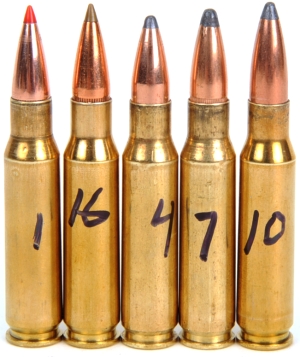
The nice part of living in the country is its gift of privacy and freedom. For anyone looking for America, it’s there. Just far from noisy urban centers, angry issues and people who want to tell you how to live. The Ruger AR-762 is America. It’s a defense weapon, it’s a tool for law enforcement, it’s a recreational target rifle, it’s a hunting rifle. It’s a tool. Fits right in with the TIG welder, or the compressor or the tractor. It is a symbol of self-reliance.
An Ingmar Bergman like SR-762 introspective… No. Not really

For a couple of weeks, a good deal of time was committed to working with the SR-762. It was shot with the supplied rapid deploy sights, red dot reflex sights and with a scope mounted as pictured. Both factory and handloaded ammo was fired. Most of the time the SR-762 was shot from a rest at paper targets, but it was also shot from standing and sitting positions at reactive targets. It’s a rifle that is hard to put down… verbally or physically.
Form, fit and function
All controls are easily accessible and positive in operation. The handguard panels are a nice touch. They fill out the form of the handguard and they give it a comfortable shape/surface. The SR-762 was shot both with stock extended and collapsed. It is a really soft recoiling rifle that can be shot in either configuration, or in between, as needed. For anyone familiar with the rifle type, it has the balance of a high power guide gun and feels about the same when tracking a target with either metallic or reflex sights. It is a fast handling carbine. With a high magnification scope, and shooting from a rest, it has the steadiness of a varmint rifle.
Trigger
The trigger pull is classic AR and perfectly acceptable for a firearm intended for security or hunting applications. A little extra weight in a trigger pull is a bit safer and tends to take the heartbeat out of a trigger finger that follows a steep climb in rough terrain. Perhaps, at some point in time, Ruger will offer a long, heavy barrel version of the SR-762 similar in configuration to the SR-556VT with a two stage target trigger. In the meantime, if a hypercritical owner wanted a different trigger feel, the SR-762 is compatible with aftermarket specialty triggers.
Gas regulation
I started out making adjustments constantly, attempting to only open the regulator just enough for reliable cycling. It didn’t take long before I realized the system is very forgiving and does not need that type of tending. Throughout the assessment period, the regulator was set and left on the #2 position. The only time I had to make a change was when shooting some Hornady Superformance ammo that for some reason seemed to like the #3 position, as did some very light handloads with relatively light bullets.
Routine Maintenance
The SR-762 is an incredibly clean operating firearm. No receiver covered inside and out with soot and gunk, or a bolt carrier that need to be constantly disassembled and solvent soaked to remain reliable in function. Without a direct feed of bore gas and residue, the rifle stays as clean as any bolt action rifle. Like any other AR type firearm, the aft takedown pin is pushed to one side and the barrel tipped down to facilitate bore scrubbing from the chamber side. Unlike traditional AR gas blocks and ports, the SR-762 gas regulating systems is designed for easy access from the muzzle side of the gas block and no special tools are required. I cleaned the rifle when received as a habit, checked the regulator and bore after each range session, but actually only cleaned it a second time when the project was completed. No cycling or other functional problems were experienced.
Live fire – Factory ammo

Federal Fusion and Remington Express ammo, both 150 grain, we used for factory ammo assessment; common, inexpensive and on hand. Hornady Superformance ammo was tried preliminarily, but Hornady had withdraw the product line from production so it was eliminated.
| Ammunition Type | Bullet Grains |
24″ Barrel FPS |
16.125″ Barrel FPS |
Short Barrel Difference FPS |
| Federal Fusion | 150 | 2820 | 2601 | -219 |
| Hornady Superformance | 150 | 3000 | 2779 | -221 |
| Remington Express | 150 | 2820 | 2742 | -78 |
Remington appears to know optimal powder selection when it comes to the 308 Winchester. Most rifles chambered for the cartridge are lightweight and short barreled, rather than the having a 24″ barrel which is standard length for ammo manufacturer testing and spec setting. The Fusion ammo 100 yard 3 shot groups ran between 1.0″ and 1.1″ from a rest, the Remington express shot 0.6″ to 0.8″. Different bullet weights and other brands could have shot differently, but I liked this result because both represent relatively inexpensive premium brand ammo of the type that would see frequent range and hunting use. The minimal velocity loss with Remington ammo was a pleasant surprise.
Live Fire – Handloads
 Four flat base bullets were selected for handloading, two lighter loads for varmint and medium game, one midrange for large deer and black bear and one heavier weight for game with the body mass of moose and elk.
Four flat base bullets were selected for handloading, two lighter loads for varmint and medium game, one midrange for large deer and black bear and one heavier weight for game with the body mass of moose and elk.
| Bullet | Weight Grains |
Bullet Length” |
Cartridge COL “ |
| Hornady SST | 125 | 1.038 | 2.750 |
| Hornady SP | 130 | 0.940 | 2.690 |
| Winchester PP | 150 | 1.050 | 2.740 |
| Sierra Pro-Hunter | 180 | 1.210 | 2.800 |
 Hornady offers the 125 grain SST as a component bullet and currently loads the 125 grain SST in Custom Lite ammo for Cabala’s. It is intended to reduce recoil by being loaded to moderate velocity. Bullet construction is suitable for medium game with muzzle velocity in the 2,700 fps range which I thought would work well with the Ruger SR-762’s 16.125″ barrel.
Hornady offers the 125 grain SST as a component bullet and currently loads the 125 grain SST in Custom Lite ammo for Cabala’s. It is intended to reduce recoil by being loaded to moderate velocity. Bullet construction is suitable for medium game with muzzle velocity in the 2,700 fps range which I thought would work well with the Ruger SR-762’s 16.125″ barrel.
As a last minute addition, some 125 grain AccuTip bullets pulls from 30 Remington AR ammo were included in the handload exercise. Rated at 2800 fps and accurate when fired from their parent ammo, it was an opportunity to experiment with a bullet with a short shank and minimal bearing surface.

Pictured above in order listed on table below. Numbers represent sample number from test population, which is so much easier than trying to memorize identifying marks or given names. All groups were shot with a scope in place.
 |
Warning: Bullet selections are specific, and loads are not valid with substitutions of different bullets of the same weight. Variations in bullet length will alter net case capacity, pressure and velocity. Primer selection is specific and primer types are not interchangeable. These are maximum loads in my firearms and may easily be excessive in others. All loads should be reduced by 3%, and developed following safe handloading practices as represented in established reloading manuals produced by component manufacturers. Presentation of these loads does not constitute a solicitation for their use, nor a recommendation.
|
||||||||||||||||||||||||||||||||||||||||||||||||||||||||||||||||||||||||||||||||||||||||||||||||||||||||||||||||||||||||||||||||||||||||||||||||||||||||||||||||||||||||||||||||||||
|
|||||||||||||||||||||||||||||||||||||||||||||||||||||||||||||||||||||||||||||||||||||||||||||||||||||||||||||||||||||||||||||||||||||||||||||||||||||||||||||||||||||||||||||||||||||
The 16.125″ barrel was less of a velocity factor with lighter bullets. Plotting the diverging points of velocity between a 22″ and 16.125″ none of them are great. Comparing this data to industry handloading manuals where 22″ barrels or even 24″ test barrels are the norm, 125 and 130 grain velocities are essentially the same thanks to faster powder and low start pressures. At 150 grains, the velocity gap widens to 50 fps – 120 fps depending on powder selected, but differences flatten out. At 180 grains, the gap is only 50 fps – 80 fps. What might these look like in flight?
|
Hornady SST 125 Grain |
|||||||
| Yards | 0 | 50 | 100 | 150 | 200 | 250 | 300 |
| Velocity – fps | 3022 | 2865 | 2713 | 2566 | 2424 | 2286 | 2154 |
| Energy – ft.-lbs. | 2534 | 2278 | 2042 | 1827 | 1630 | 1450 | 1287 |
| Momentum – lbs-sec | 1.67 | 1.58 | 1.50 | 1.42 | 1.34 | 1.26 | 1.19 |
| Path – in. | -1.5 | 1.1 | 2.6 | 2.9 | 2.0 | -0.5 | -4.6 |
|
Sierra Pro-Hunter 180 grain |
|||||||
| Yards | 0 | 50 | 100 | 150 | 200 | 250 | 300 |
| Velocity – fps | 2543 | 2436 | 2333 | 2232 | 2133 | 2038 | 1945 |
| Energy – ft.-lbs. | 2584 | 2372 | 2175 | 1990 | 1819 | 1659 | 1511 |
| Momentum – lbs-sec | 2.03 | 1.94 | 1.86 | 1.78 | 1.70 | 1.62 | 1.55 |
| Path – in. | -1.5 | 1.4 | 2.9 | 2.7 | 0.8 | -3.0 | -8.9 |
With a 3.0 ordinate, both loads are point blank to approximately 250 yards. No range estimating from zero to a long ways out and lots of velocity and energy out beyond 300 yards. The 180 grain load, as an example, is pulling half a ton of energy out to 500 yards and remains supersonic out to 1,000. Less worrying about holdover distances and having to guess if you are looking at a small but faraway deer, or a monster buck at 50 feet. You know what I mean…
Good grief! Someone take this rifle away so I can get back to work…
OK, so I shot the SR-762 with open sights, a scope, a red dot sight. Light ammo, heavy ammo, slow fire, rapid fire… yet it seemed every time it quickly went to ambient cool, and it stayed clean… except for that little telltale brass smudge on the deflector. The finish showed no premature signs of handling, parts did not work loose nor did controls get sloppy. Whatever was supposed to click or snap into position did so.

I am sold on the gas driven piston system and I can’t think of a reason this should be done any other way, other than to reduce manufacturing cost. I’d rather pay a modest amount more and get the better firearm, especially when you throw in Ruger quality and product backing. There will always be a few message board guys who think all ARs are the same and, with them, the exceptional features of this rifle will be lost. For folks who own, work on and shoot these types of rifles with frequency, the Ruger AR-762 will be viewed as an excellent firearm. For more details, stop by the Ruger site.

Email Notification